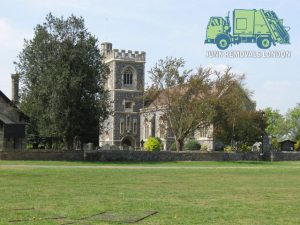Havering is the easternmost borough of London. It covers an area of 43.35 square miles which makes it one of the largest boroughs in the English capital. Recent studies show that Havering is home to an estimate of 250.000 people but due to its size has a low density rate of just 5.700 people per square mile. The area is home to several internationally known landmarks, green areas and entertainment venues.
The district of Chase Cross lies in the northwestern parts of the borough and is classified as a residential area. It is inhabited mainly by commuters who work in the other parts of the city. Chase Cross, RM5, is served by a number of bus routes which pass through it on a regular basis. The nearest rail links are situated in the adjacent districts of Romford, Hainault and Newbury Park.
Havering-atte-Bower, RM4, is an area which shares common boundaries with the above mentioned district of Chase Cross. It is located at precisely 15 miles from the noted intersection of Charing Cross and was one of the three parishes which formed the historic Royal Liberty of Havering. Havering-atte-Bower is home to several well-known landmarks such as The Round House and Bower House. Both edifices are listed buildings. The area was once the site of Havering Palace, Pyrgo House and Pirgo Palace.
Harold Hill is a large suburban  district which is situated in the northeastern parts of Havering. It has a population of about 15.000 residents and lies at an estimate of 17 miles from Charing Cross. The area is home to the Drapers’ Academy which is one of the finest secondary schools not only in the borough but in London as well. It was established in 2010 and currently provides top quality education to 550 pupils from the ages of 11 to 19. The school board aims to double its student body in the upcoming years. Harold Hills, RM3, in served by numerous bus routes.
district which is situated in the northeastern parts of Havering. It has a population of about 15.000 residents and lies at an estimate of 17 miles from Charing Cross. The area is home to the Drapers’ Academy which is one of the finest secondary schools not only in the borough but in London as well. It was established in 2010 and currently provides top quality education to 550 pupils from the ages of 11 to 19. The school board aims to double its student body in the upcoming years. Harold Hills, RM3, in served by numerous bus routes.
The area of Emerson Park has a population of approximately 12.000 inhabitants and is part of the RM11 postal code district. Charing Cross is located at about 15 miles from the area. Emerson Park is identified as a residential district and is one of the borough’s most desirable as it isn’t home to any major landmarks which attract visitors. The area is served by its own railway station which was opened in 1909 and sits on the Romford to Upminster Line from the London Overground. It is used by an estimate of 150.000 people on a yearly basis.
Romford is Havering’s main district as it is the location of the headquarters of the Havering London Borough Council. It has a population of almost 100.000 residents and is home to several well-known churches. St. Edward the Confessor is perhaps the district’s most prominent landmark. It was constructed during the mid-19th century and designed by renowned British architect John Johnson. It is built in the Victorian Gothic style and has been a Grade II* edifice since the early 1950s. Romford, RM7, is connected to the other parts of London by its own station. The transportation hub was established in 1839 and serves the:
- Crossrail
- London Overground
- National Rail Network
It provides transportation services to over nine million passengers annually.
The town of
, RM13, is situated in the southern parts of the borough. It is the location of the Rainham Hall which is one of the city’s most popular and beautiful Georgian houses. It was constructed for Captain John Harle during the first half of the 18th century. The edifice is listed as a Grade II* and has been open for public visitations since 2015. The Church of St. Helen and St. Giles is another well-known local landmark. Rainham is served by its own railway station which sits on the London, Tilbury and Southend Line.
Upminster is one of Havering’s most popular districts as it is the location of the Church of St. Laurance and the Upminster Windmill. The area has a population of about 25.000 and is situated at approximately 17 miles from Charing Cross. It is also home to the Museum of Nostalgia or the Upminster Tithe Barn. The venue was founded in 1976 and has a collection of around 15.000 items. It is housed in a barn that dates back to the mid-15th century.
